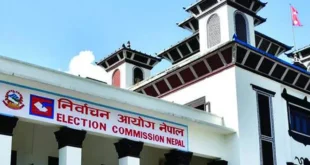Dr. Seema Javed
 Though the threat of corona virus is grave and deserves every bit of the attention it is receiving. Perhaps embracing the seriousness of air pollution with a similar vigor would allow billions of people around the world to lead longer and healthier lives.
Though the threat of corona virus is grave and deserves every bit of the attention it is receiving. Perhaps embracing the seriousness of air pollution with a similar vigor would allow billions of people around the world to lead longer and healthier lives.
People in states like Bihar and West Bengal can add more than 7 years to their life if air quality met the WHO guideline. Residents in Haryana can expect to live 8 years longer if the WHO guideline was achieved, according to the Air Quality Life Index (AQLI) released today.
The AQLI is a pollution index that translates particulate air pollution into perhaps the most important metric that exists: its impact on life expectancy. Developed by the University of Chicago’s Milton Friedman Distinguished Service Professor in Economics Michael Greenstone and his team at the Energy Policy Institute at the University of Chicago (EPIC), the AQLI is rooted in research that quantifies the causal relationship between long-term human exposure to air pollution and life expectancy.
The Index also illustrates how air pollution policies can increase life expectancy when they meet the World Health Organization’s guideline for what is considered a safe level of exposure, existing national air quality standards, or user defined air quality levels. This information can help to inform local communities and policymakers about the importance of air pollution policies in concrete terms.
The report reveals A quarter of India’s population is exposed to pollution levels not seen in any other country and an average Indian sees their life cut short by more than 5 years relative to what it would be if the World Health Organization (WHO) guideline was met,

As countries around the world race to develop a coronavirus vaccine, there is another, everyday killer causing billions of people to lead shorter and sicker lives: air pollution. New data from the AQLI, which converts particulate air pollution into its impact on life expectancy, reveals that particulate pollution was the greatest risk to human health before COVID-19. And without strong and sustained public policy, it will be after COVID-19.
According to the AQLI, particulate pollution in India has sharply increased by 42 percent over the last two decades. Today, 84 percent of people in India live in areas that exceed the country’s own air quality standards and the entire population is exposed to levels that exceed the WHO guideline. As a result, the average resident sees their life cut short by more than 5 years relative to what it would be if the WHO guideline was met; more than 2 years if the national standard was met.
Meanwhile, a quarter of India’s population is exposed to pollution levels not seen in any other country, with the nearly 230 million residents of Uttar Pradesh on track to lose more than 8 years of life expectancy relative to the WHO guideline. Residents of Delhi could see more than 9 years added to their lives if pollution were reduced to meet the WHO guideline.
Michael Greenstone, the Milton Friedman Distinguished Service Professor in Economics and creator of the AQLI along with colleagues at the Energy Policy Institute at the University of Chicago (EPIC) says that “The reality is, no shot in the arm will alleviate air pollution. For a country like India, the solution lies in robust public policy. The AQLI tells citizens and policymakers how particulate pollution is affecting them and their communities and can be used to measure the benefits of policies to reduce pollution.”
New findings from the AQLI also indicate that citizens in states like Bihar and West Bengal can add more than 7 years to their life if air quality met the WHO guideline. Residents in Haryana can expect to live 8 years longer if the WHO guideline was achieved.
In 2019, the central government declared a “war on pollution” and announced the National Clean Air Programme (NCAP) to reduce particulate pollution by 20-30 percent relative to 2017 levels by 2024. Though the NCAP’s goals are nonbinding, if India does achieve and sustain this reduction, it would lead to remarkable health improvements, according to the AQLI. A nationwide reduction of 25 percent—the midpoint of the NCAP’s target—would increase India’s national life expectancy by 1.6 years, and by 3.1 years for residents of Delhi.
The state governments in India have already been working proactively towards improving air quality. A case in point is the world’s first emissions trading system (ETS) for particulate pollution, where researchers from the University of Chicago along with others are working closely with the Gujarat Pollution Control Board. The ongoing pilot in Surat aims to reduce particulate pollution generated by industrial plants while cutting costs.
also read: Illegal trade of Turtle meat caught in Uttar Pradesh
also read: In two week positive development upon COVID-19 treatment: Trump
“History is full of examples of how strong policies can reduce pollution, lengthening the lives of residents,” says Greenstone. “There is a very real opportunity for leaders in India and across South Asia to become the next success story as they work to balance the dual goals of economic growth and environmental quality. The success of the Surat ETS suggests that flexible market-based approaches can allow for making progress on both goals at once.”
(Author is an Independent Journalist, environmentalist & Strategic Communicator)
 Jubilee Post News & Views
Jubilee Post News & Views





